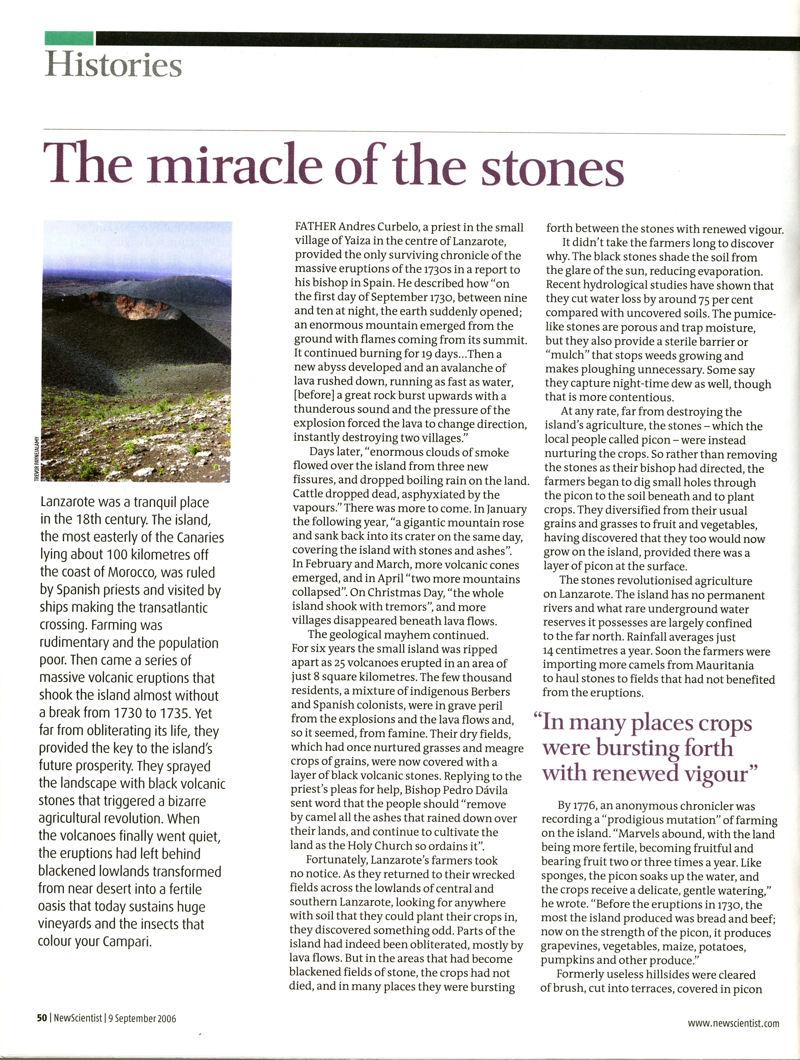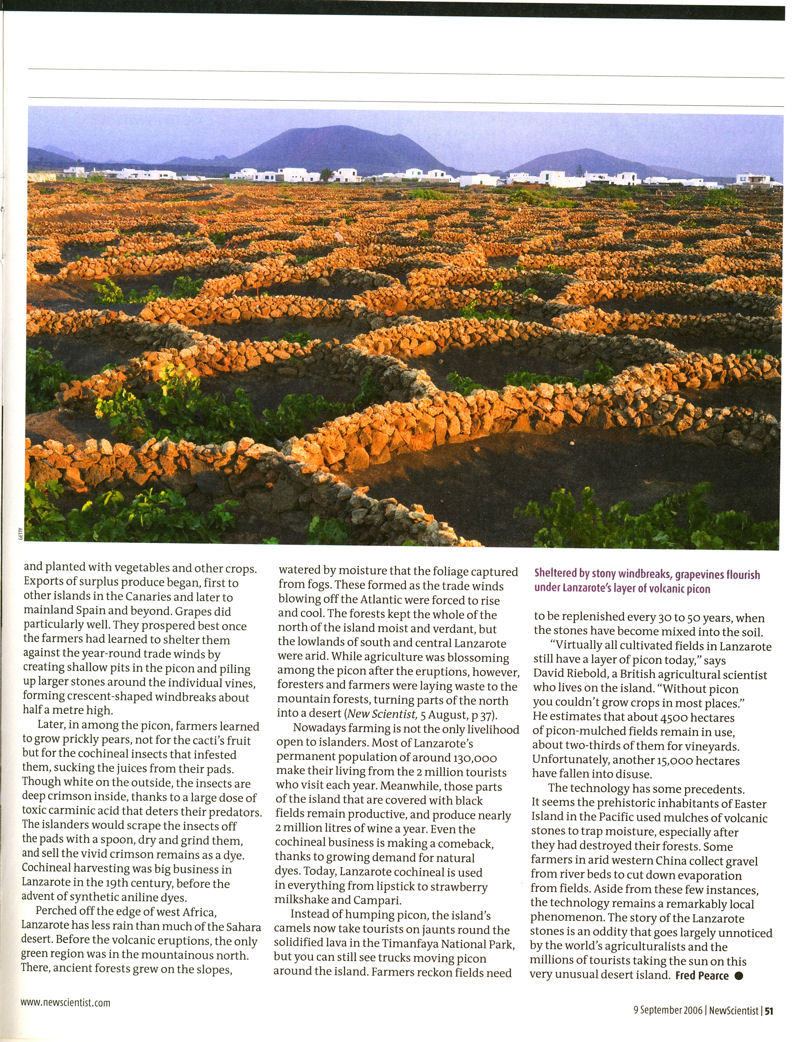Stone mulching
This is the text of an article which first appeared in Clean Slate magazine # 14 (the journal of the Alternative Technology Association)David Riebold uncovers a layer of traditional dry climate farming techniques, which may hold water for many arid areas.
what is mulch?
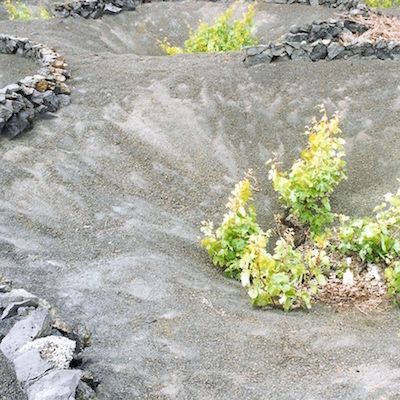
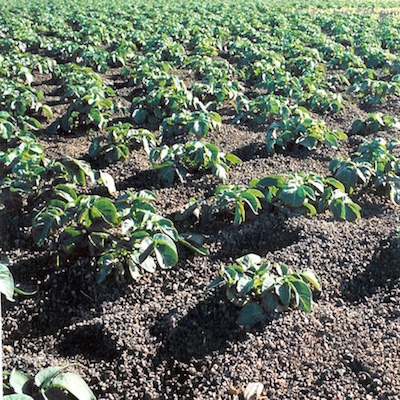
Preventing evaporation
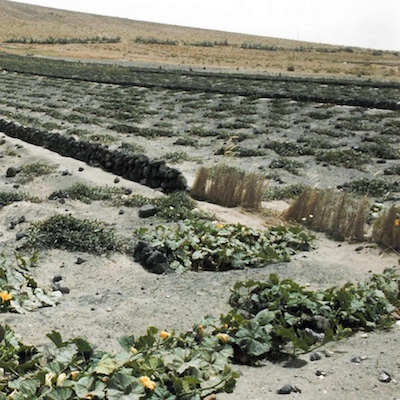
the wider potential
In terms of evaporation suppression, stone mulch techniques are probably of most relevance to hot regions where rainfalls low (500mm p.a.) and seasonal; picon can be a disadvantage with frequent light rain.
Picon and pumice, being very light, are Ideal materials, but supplies are limited to areas with recent volcanism. Any other available stone of particular Size, from coarse sand up to about 2cm diameter, may be worth trying.
Stone mulches may have a role in wetter climates for tree planting, soil temperature reduction and prevention of erosion, the latter benefit demonstrated by the endurance of picon fields with slopes of over 20 degrees, common on Lanzarote despite constant high winds and fierce winter storms.
The future for Lanzarote farmers

Location
C. la Cañada, 2, 35542 Haría, Las Palmas
Contact us
David (+34) 654 852 479 david.riebold@gmail.com

